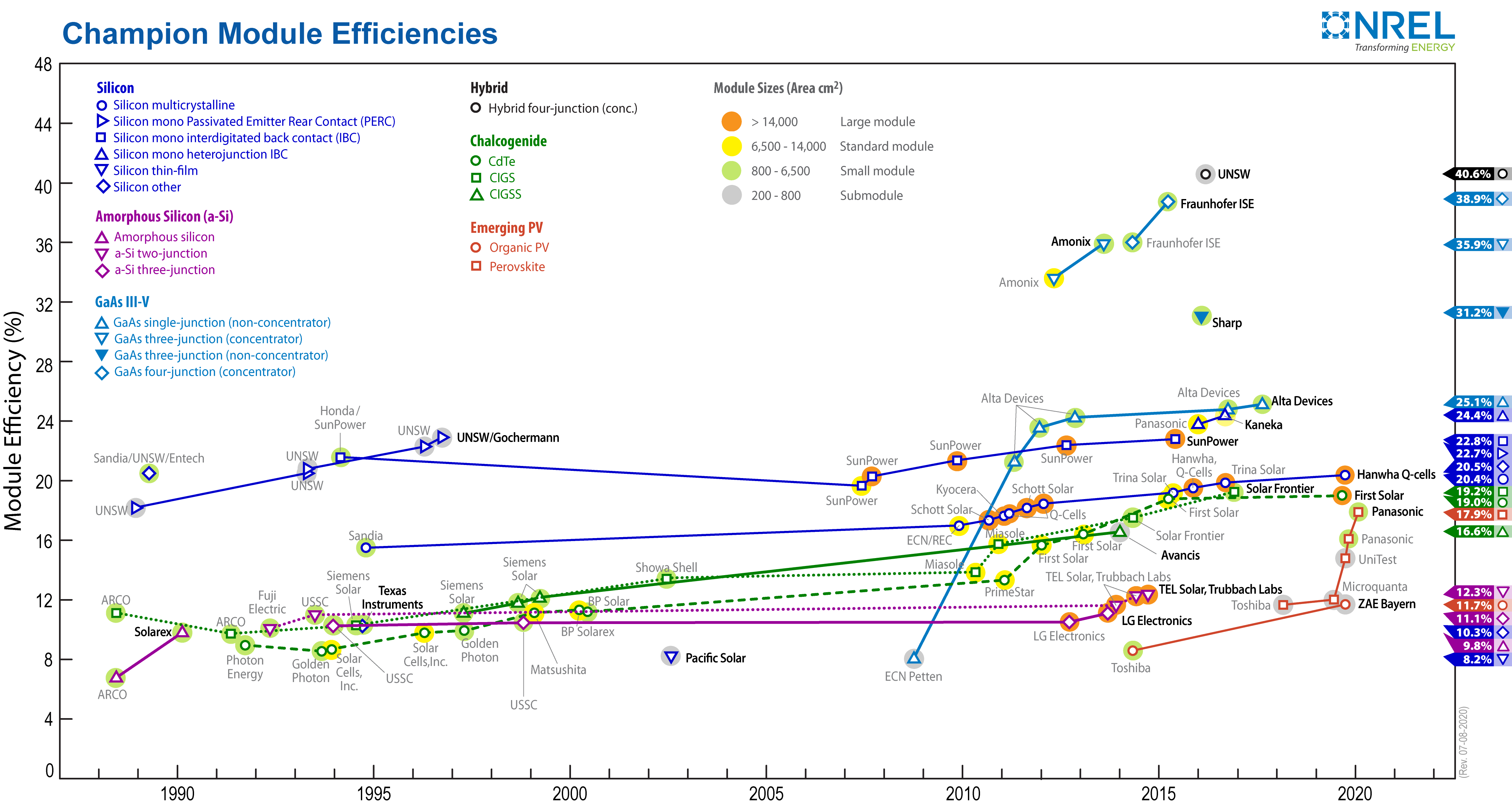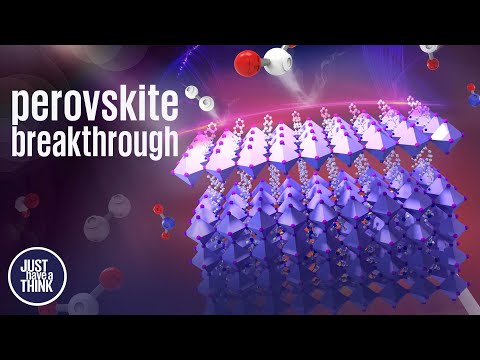Perovskite structures are notorious for breaking down very rapidly in real-world use. Now a research team from Princeton University has developed a process for overcoming that problem, making perovskite a real competitor to existing silicon PV technology.
https://en.wikipedia.org/wiki/Perovskite_solar_cell
Key takeaway of the wiki article:
Solar cell efficiencies of laboratory-scale devices using these materials have increased from 3.8% in 2009[3] to 25.7% in 2021 in single-junction architectures,[4][5] and, in silicon-based tandem cells, to 29.8%,[4][6] exceeding the maximum efficiency achieved in single-junction silicon solar cells. Perovskite solar cells have therefore been the fastest-advancing solar technology as of 2016.[1] With the potential of achieving even higher efficiencies and very low production costs, perovskite solar cells have become commercially attractive. Core problems and research subjects include their short- and long-term stability.[7]
This new advancement might fix their biggest flaw.
A graph showcasing the recent rapid progress with perovskite solar cell technology:
https://upload.wikimedia.org/wikipedia/commons/3/33/ModulePVeff(rev200708).png



